Hair Washing Secrets You Probably Don’t Know
We all want to have healthy and beautiful hair. There are many factors that affect the way it looks, including washing. If you stick to certain rules in your hair care regimen, a positive result will surely rear its head.
5-Minute Crafts is going to tell you how to wash hair correctly as not to harm your locks and improve its condition.
Let’s start with the fact that there are no rules about how often you should wash your hair. Everyone should decide on their own.
One has to wash very greasy hair every day. Normal hair should be washed once every 2-3 days, and dry hair ought to be washed once a week. The main thing to take into account is your comfort level.
Washing your non-greasy hair too often can dry your hair and scalp out. At the same time, if you wash your hair rarely, it will start to smell unpleasant, and your skin will itch.
Why hair becomes dirty
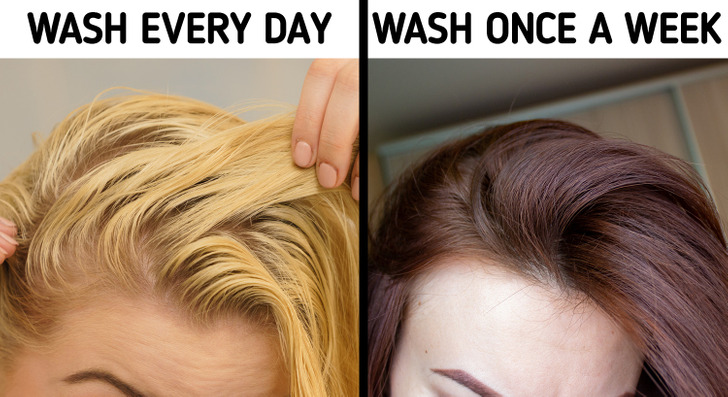
Factors that affect the frequency of washing hair:
- Overactive sebaceous glands: Too much grease at the roots can clog pores and cause an itchy scalp. This can result in dandruff and even hair loss. The sebaceous glands on the scalp of many adolescents and young adults are rich in grease. This is due to certain hormonal changes. But for some people, it continues throughout life.
- Fine hair: Fine hair gets dirty more quickly because the grease from the scalp rolls off more easily down the strands. In addition, people with fine hair tend to have more sebaceous glands on their heads.
- Leave-in styling products: They can damage the hair, clog pores, and irritate the skin. After using such products, it’s better to wash your hair.
- Sweat: It attracts dirt and makes your scalp greasy.
- Dust: It’s always better to wash your hair after cleaning your home or after working in the garden since your hair accumulates dust during these processes.
Important! If you have scalp illnesses (psoriasis, excessive dryness, or dandruff), the frequency of hair washing should be discussed with a dermatologist.
Whether or not it’s harmful to wash your hair every day
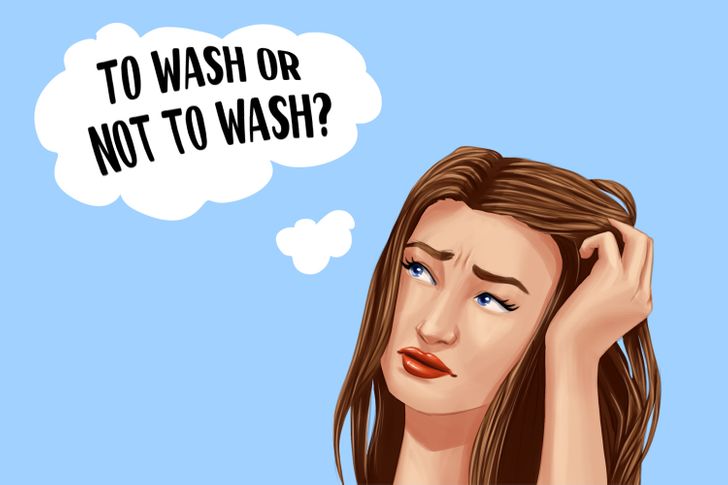
It’s fine hair that normally gets dirty fast. This is because people with this type of hair have more sebaceous glands on the scalp, and grease spreads more easily through the strands. This type of hair typically needs to be washed daily.
Also, those who do sports actively, sweat abundantly, or live in humid climates wash their hair more often.
Experts say that washing your hair every day doesn’t harm it. On the contrary, cleanliness is the key to its health. In this case, it is recommended to use special shampoos and balms suitable for daily use. At the same time, one should not do too much drying with a hair dryer or hot styling. If possible, it is better to dry your hair naturally.
How to put off washing your hair
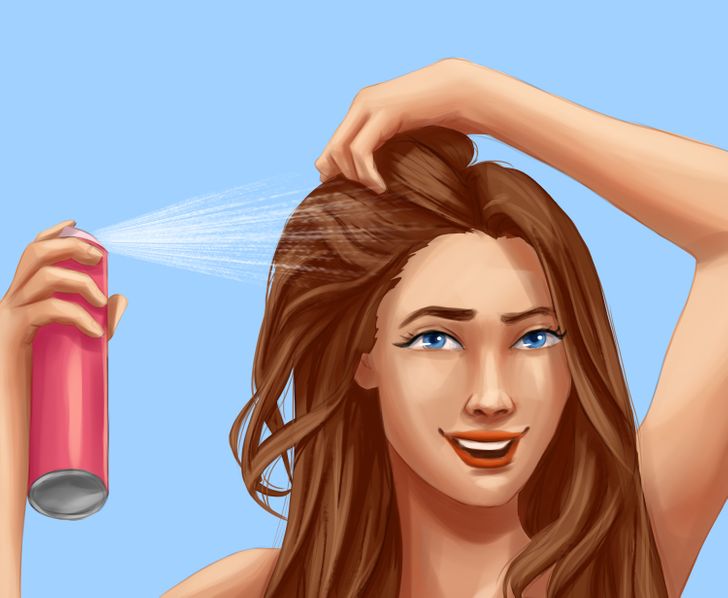
Sometimes hair doesn’t look fresh, but we either don’t want to wash it or don’t have time to. There are special products, such as conditioners, powders, and dry shampoos, for such cases.
It’s best not to use a leave-in conditioner as it can weigh down your hair, especially if you have fine strands and a greasy scalp. But dry shampoo is a perfect choice for this. It needs to be gently sprayed onto the roots by dividing the hair into strands.
What water to use and which pose to take when washing your hair
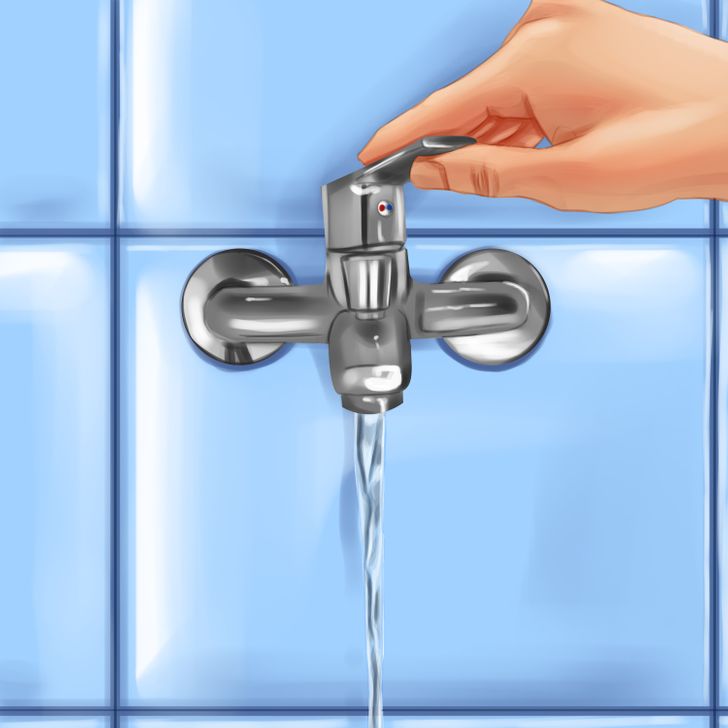
It’s recommended to wash your hair with warm water. Hot water is stressful for the hair, as it makes it dry and brittle. Moreover, it can provoke hair loss. Cold water is much healthier in this sense but it can take away the volume.
It’s recommended to start washing the hair with warm water. It will open up hair scales and pores on the scalp. This will make it easier to wash off the dirt. Finally, rinse your hair with cold water.
There is no single solution on which approach to take when washing the hair. Some people recommend lowering the head down, while others insist on throwing it back. Some think that when the head is thrown back, the back of the head is not always washed well. Lowering your head will make it easier to foam your shampoo. However, this method is not suitable for those who suffer from backaches or have a tendency for headaches or dizziness. In addition, washing your hair upside down can cause long hair to become more tangled. Therefore, you should wash your hair in a way that is convenient for you.
What products are used for taking care of hair in home conditions
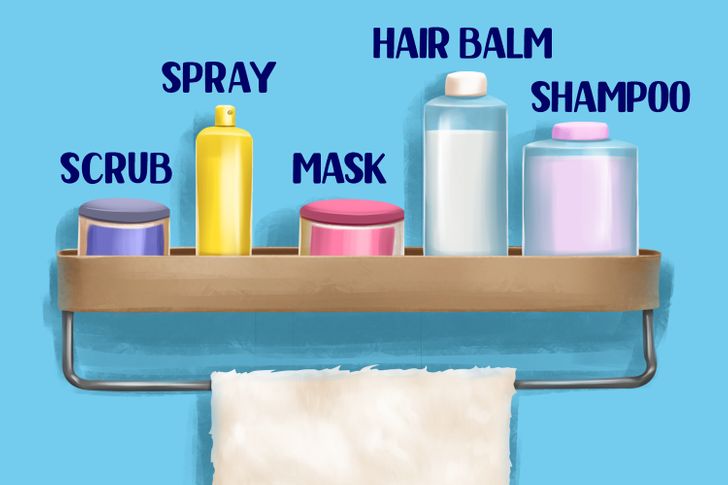
- Scrubs or peels: They are needed to exfoliate dead scalp cells. These products are used when needed before shampooing.
- Shampoo: It removes grease and dirt from the scalp and hair. All of our skin is covered with pores, and the sebaceous glands are located under them. The latter produces grease. It is vital for maintaining healthy skin and hair. The shampoo contains surfactants that wash away excess grease. But after some time (this can vary for everyone), it comes out again. Grease attracts dust and dirt particles, which can cause itching and irritation. Therefore, you need to keep your hair clean. But it’s important to stick to the golden middle because washing your hair too often can remove all the natural oils and moisture from the skin.
- Balm: It is perfect for nourishing, moisturizing, and restoring hair. It is used after shampooing 2-3 times a week. Most often, the balm is not applied to the roots because it can make them heavy. But there are exceptions. You can use nourishing balms on your scalp. Follow the instructions on the package to use this product correctly.
- Conditioner: Unlike hair balm, it acts on the surface of the hair. It makes hair smoother, easier to comb, and protects it from the harmful effects of the environment. The conditioner is not applied to the roots. It is suitable for daily use.
- Mask: It is the most nutritious and regenerating home care product. It is usually applied to both the roots and the entire length of the hair. The mask should be used after shampooing and before applying the conditioner. Some hair doesn’t need a conditioner after the mask, as it seals all the scales and makes the hair smooth.
- Leave-in care, like conditioners, serums, sprays, creams: They make hair smooth, shiny, and silky and also help to comb and style it easily. Leave-in care is applied after you’ve washed and slightly dried your hair.
All products should be chosen according to your hair type. There are shampoos, conditioners, and masks for dry, fine, oily, curly, and colored hair, and so on. When choosing a product, take into account your scalp type as well. For example, it’s better to use mild shampoo for sensitive skin, while those with dandruff issues can opt for a special treatment shampoo that will help to solve the issue.
What to pay attention to when reading the composition of haircare products
Ingredients to avoid in shampoo and conditioner compositions:
- Sulfates — they can remove natural oils from hair and leave it dry and damaged. The main sulfates that experts advise to watch out for are ammonium lauryl sulfate, sodium laureth sulfate (SLES), and sodium lauryl sulfate (SLS).
- Parabens — they can irritate the scalp and disrupt its natural hormonal balance. The most common parabens are butylparaben, ethylparaben, and methylparaben.
- Polyethylene glycol (PEG) — PEG deprives hair of moisture and causes it to become brittle. Experts warn that it can be dangerous for your health.
- Phthalate, formaldehyde, triclosan, dimethicone, alcohol, fragrances, dyes, quaternium-15, selenium sulfide, resorcinol, toluene, and retinyl palmitate
Useful ingredients in shampoos and conditioners:
- Essential oils — shea butter, for example, softens and moisturizes the hair, prevents breakage, and soothes scalp irritation. Almond oil is great for moisturizing the skin, cedarwood oil promotes hair growth, and Moroccan oil contains beneficial antioxidants.
- Aloe vera — it’s used to treat and prevent hair loss. Aloe also moisturizes the scalp well and strengthens the hair.
- Vitamins Е and В5
- Hydrolyzed keratin — it’s used in conditioners to repair damaged hair.
Of course, this is not a full list of useful elements in haircare products.
How we should wash our hair
- Comb it. It’s necessary to comb your hair before washing it.
- Wet it. First, rinse your hair with warm water thoroughly to open up the scales and pores. Experts recommend using a shower filter that purifies the water.
- Shampoo it. Take a small amount of shampoo (about 1 teaspoon), mix it with water in your palms, and apply it to the scalp. This will help you consume less shampoo. Don’t distribute it through the entire length as it can dry your hair out. Wash the roots of your hair with massaging movements. Pay special attention to the back of your head and the hairline because they get the dirtiest. Don’t rub your hair or make circular motions as it can tangle it.
- Rinse it. Thoroughly rinse the shampoo out with water so that it doesn’t clog your pores. Leaving shampoo on your hair will make it look dull and greasy.
- Washing for a second time isn’t a must. Some shampoos have recommendations about the second application written in their instructions. You might need to do this if the hair is really dirty. But in most cases, the shampoo works well the first time.
- Apply conditioner. This is a very important step when washing your hair. Balms and conditioners moisturize the hair and make it smoother. Apply the product from mid-length to the ends and let it sit for a couple of minutes. It’s advised to apply a little more conditioner to the ends than to the main length. If possible, keep the conditioner on your hair a bit longer to increase its effect.
- Rinse. It’s recommended to rinse the conditioner with cold water — it closes the hair scales and helps to retain moisture inside.
- Towel dry it. Carefully dry your hair with a towel — don’t rub it.
Life hack: If you have long hair, apply conditioner to the ends before shampooing. This will keep your hair from drying out and it’ll break less.
How to dry and comb hair correctly
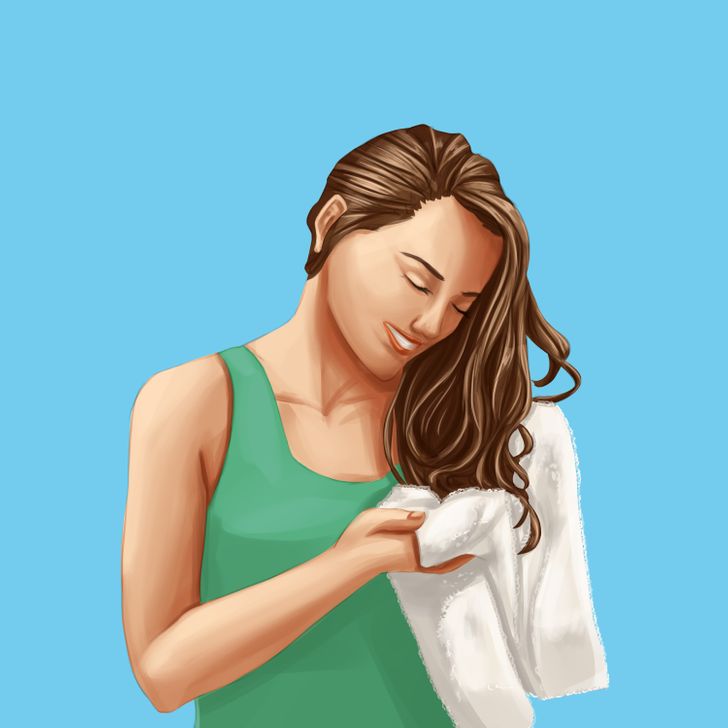
Normally, we dry our hair with a towel after washing it. But it should be done correctly. Wet hair is very brittle, which is why intensive rubbing can damage and even provoke hair loss. It is advised to use soft microfiber towels for the head.
After washing the hair, gently squeeze out excess water. Do it by moving from roots to the ends. Then take a towel and start blotting the strands with it. You don’t need to rub your hair, just squeeze it slightly.
It’s very useful to comb the hair. It stimulates blood flow, which saturates the scalp and hair follicles with oxygen and nutrients. However, don’t grab the brush or comb too often. This can lead to hair breakage and loss, as well as scalp irritation. You should comb it about 2 times a day, but take into account the condition of the hair. If your hair looks perfect, leave it alone.
It’s not recommended to comb or brush your hair right after washing it. It should be 80% dry before brushing because wet hair is very brittle. It’s better to move the comb down to up, from the ends to the roots. Knots should be untangled carefully, also starting from the ends.
Important! Curly hair should be combed with a wide-toothed comb before shampooing. You can tweak dry, curly hair by running your fingers through it.